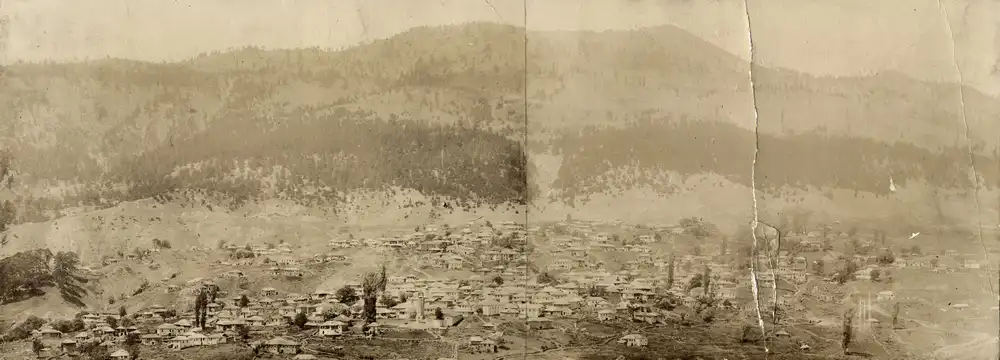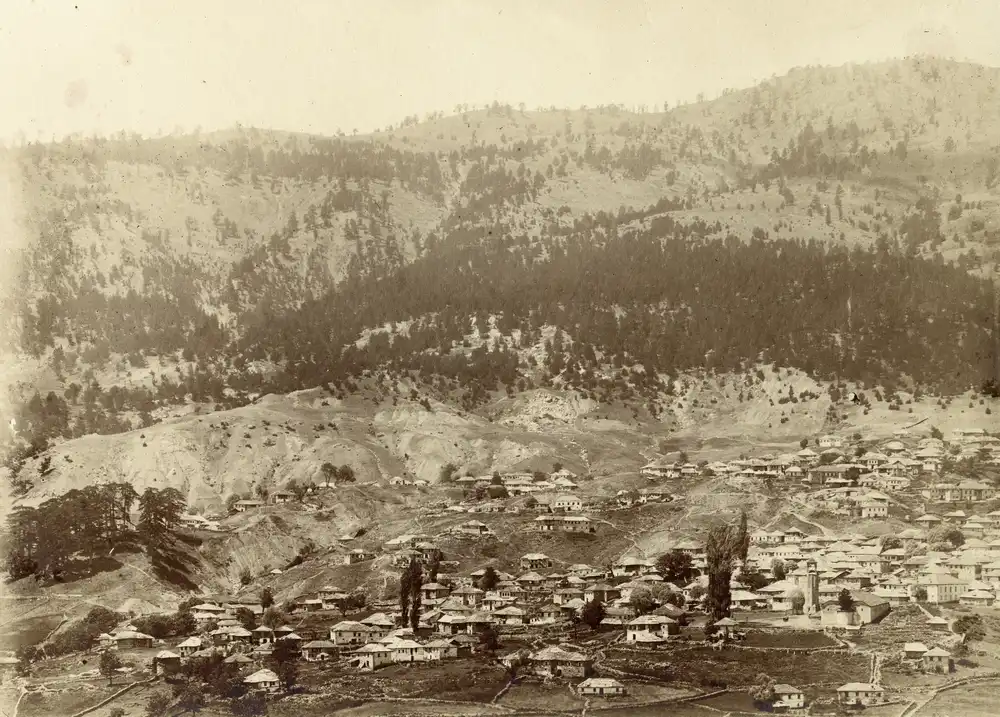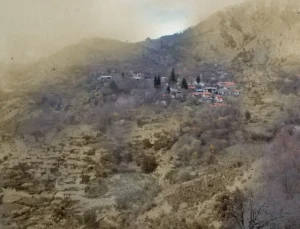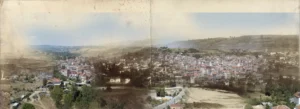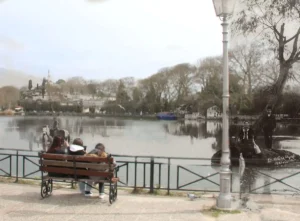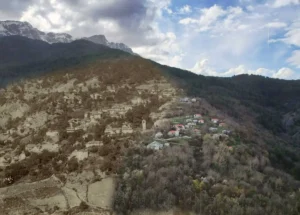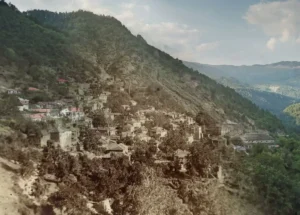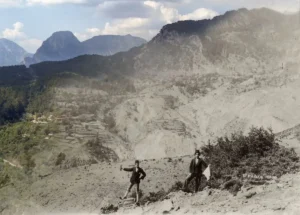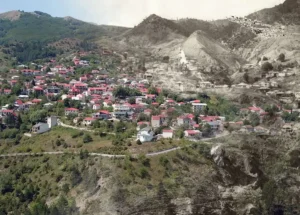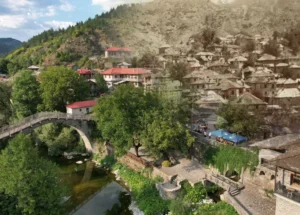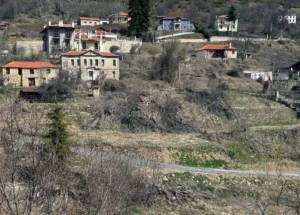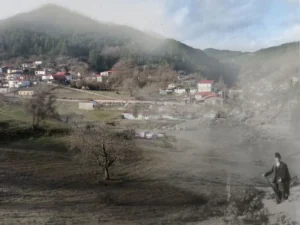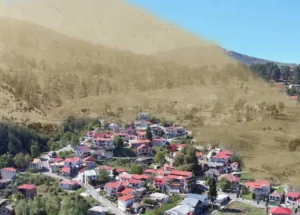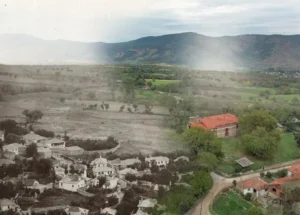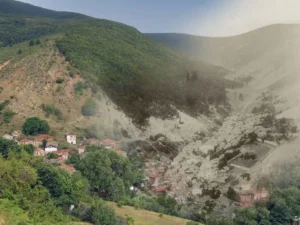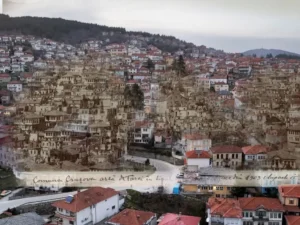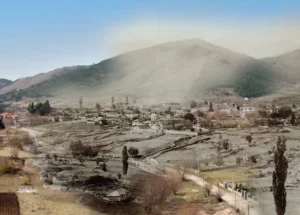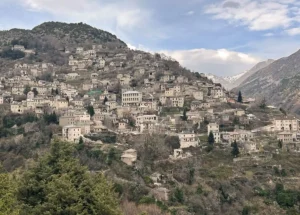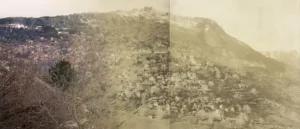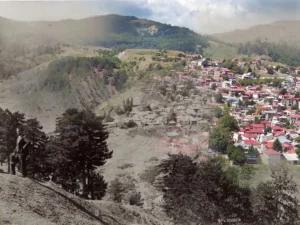
This was the easiest to locate among the photographs of Vlach villages taken by the Manakia brothers around 1900. It shows a distant view of Samarina, considered one of the highest villages in the Balkan Peninsula. The photograph shows an astonishing detail: a pine tree growing on the roof above the altar of the main church in Samarina. The peculiarity is that this pine tree never bears cones, and its roots are not visible in any way – neither from the outside nor inside the church – as they have not pierced through the thick roof into the altar. Wace and Thompson include a photograph of this pine in their book, likely taken a few years after the Manakia brothers’ image. Strangely, after more than a century, the tree hardly appears to have grown or developed at all.
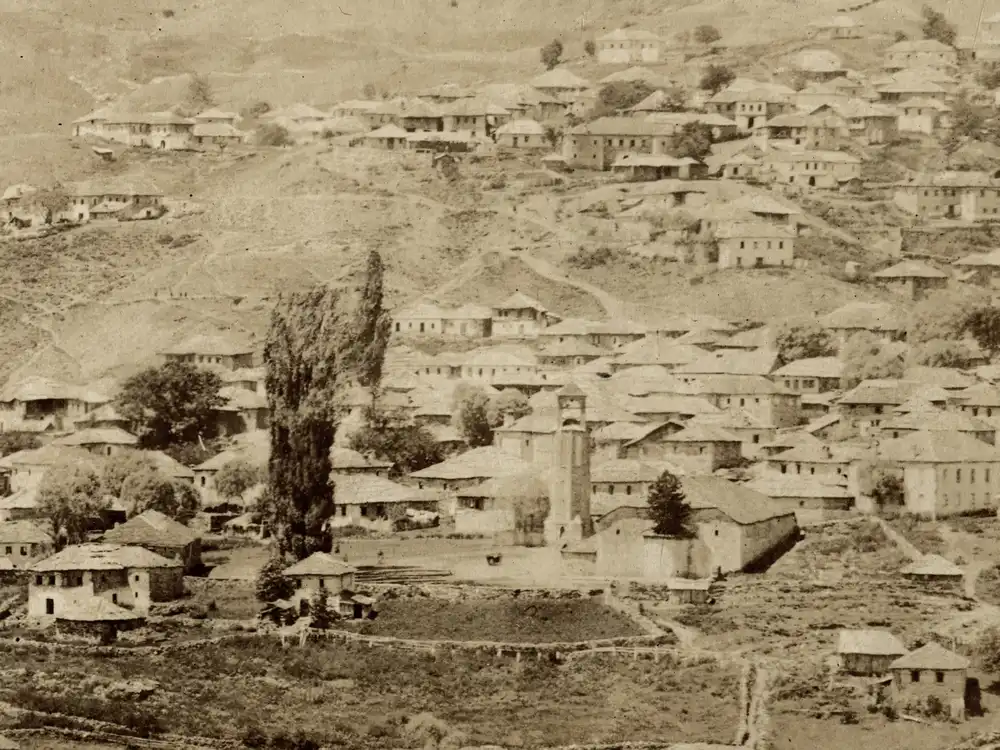
The description Wace and Thompson provide about Samarina, viewed from a distance, closely matches the frame captured by the Manakia brothers. “The Pade Mushatæ (Fair Mead) deserves its name; it is a fine level space on the mountain slope, cut through here and there by rivulets of icy cold water, carpeted with good green turf, and in spring and early summer bright with flowers, primroses, cowslips, meadowsweet, gentian and cypripedium. Immediately before us is Gorgul’u. Behind Gorgul’u and half hidden in cloud is the triple massif of Zmolku, of which only two peaks, Zmolku and Moasha (The Old Woman), are visible. Directly in front of us deep down in the valley under the summit of Gorgul’u is the junction of two small streams. Just above this confluence and on the slope below the pine woods of Gorgul’u is Samarina itself. All eyes were at once turned towards the village. Our field glasses were hastily requisitioned, as all wanted to see the famous church on which grows a pine tree.”
